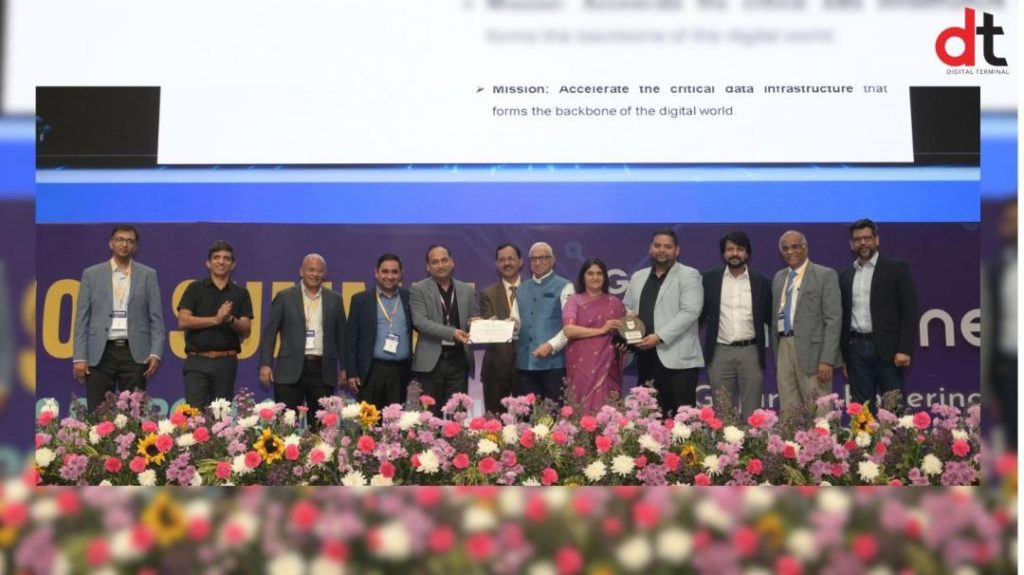
IESA Vision Summit Showcases India’s Semiconductor Progress
The Indian Electronics and Semiconductor Association (IESA) Vision Summit, held recently, highlighted the progress India has made in the semiconductor manufacturing and design industry. The event, which has been a benchmark of excellence in the ESDM (Electronics System Design and Manufacturing) industry for over a decade, recognized and honored the most innovative and impactful individuals, startups, industries, and academia driving India’s leadership in electronics design and manufacturing.
The IESA Technovation Awards, a highlight of the summit, has been a benchmark of excellence in the ESDM industry for over a decade. Year after year, these awards continue to recognize and honor the most innovative and impactful individuals, startups, industries, and academia driving India’s leadership in electronics design and manufacturing.
The summit brought together industry leaders, policymakers, and experts to discuss the current state of the semiconductor industry in India and the opportunities and challenges it faces. The event also provided a platform for companies to showcase their latest technologies and innovations, and for startups to pitch their ideas and products to investors and partners.
India’s Semiconductor Journey
India’s journey in the semiconductor industry began in the 1980s with the establishment of the Indian Space Research Organization (ISRO) and the Defence Research and Development Organisation (DRDO). Over the years, the country has made significant progress in the development of indigenous semiconductor design and manufacturing capabilities.
In the early 2000s, India’s semiconductor industry began to take shape with the establishment of companies like Tata Elxsi, Wipro, and Infosys. These companies focused on designing and developing electronic systems and components for various industries such as automotive, aerospace, and consumer electronics.
In the mid-2000s, the Indian government launched initiatives to boost the growth of the semiconductor industry. One such initiative was the setting up of the Indian Semiconductor Association (ISA), which aimed to promote the development of the semiconductor industry in the country.
The ISA, later renamed IESA, played a key role in promoting the growth of the industry by providing a platform for companies to share knowledge, collaborate, and access funding. The association also worked closely with the government to formulate policies and regulations that would support the growth of the industry.
India’s semiconductor industry has made significant progress in recent years. The country has become a major player in the global electronics design and manufacturing market, with companies like Tata Elxsi, Wipro, and Infosys leading the way.
India’s semiconductor industry is also home to a number of startups that are working on innovative technologies and products. These startups are developing solutions in areas such as IoT, AI, and machine learning, and are partnering with global companies to bring their products to market.
Challenges and Opportunities
Despite the progress made by the Indian semiconductor industry, there are still several challenges that the industry faces. One of the major challenges is the lack of domestic manufacturing capabilities. India imports a significant portion of its semiconductor requirements, which makes it vulnerable to global supply chain disruptions.
Another challenge the industry faces is the lack of skilled manpower. India needs a large pool of skilled engineers and technicians to support the growth of the industry.
Despite these challenges, the Indian semiconductor industry is expected to continue its growth trajectory. The government’s initiatives to promote the growth of the industry, such as the Make in India and Startup India initiatives, are expected to provide a boost to the industry.
The IESA Vision Summit, which was held recently, highlighted the progress India has made in the semiconductor manufacturing and design industry. The event provided a platform for companies to showcase their latest technologies and innovations, and for startups to pitch their ideas and products to investors and partners.
The summit also emphasized the need for the industry to work together to overcome the challenges it faces. The event called for greater collaboration between industry players, academia, and the government to support the growth of the industry.
Conclusion
The IESA Vision Summit, held recently, highlighted the progress India has made in the semiconductor manufacturing and design industry. The event recognized and honored the most innovative and impactful individuals, startups, industries, and academia driving India’s leadership in electronics design and manufacturing.
India’s semiconductor industry has made significant progress in recent years, but there are still several challenges that the industry faces. Despite these challenges, the industry is expected to continue its growth trajectory, driven by government initiatives and the innovative spirit of its companies and startups.
As the industry looks to the future, it is clear that collaboration and innovation will be key to its success. The IESA Vision Summit was a significant step in the right direction, and it is expected to provide a boost to the industry’s growth and development.






